#william c. beall
Text

William C. Beall ~ Pulitzer Prize. 1958
102 notes
·
View notes
Text
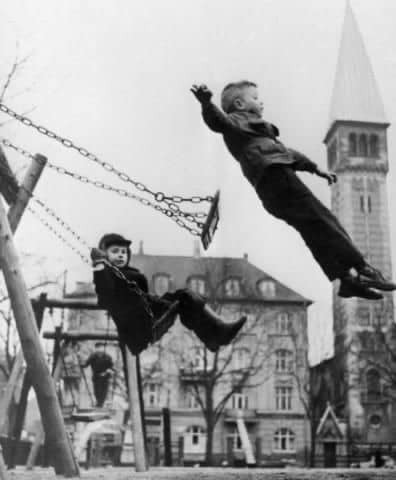
Via Inspired by Henri Cartier-Bresson
Wioletta Tomczyk Photo by William C. Beall.
3 notes
·
View notes
Text
Benjamin Murdoch's life after the war [Part 6]
Continued from part 5
Reprinted from my History Hermann WordPress blog.
© 2016-2023 Burkely Hermann. All rights reserved.
Notes
[1] Journal and Correspondence of the Council of Maryland, 1779-1780, Archives of Maryland Online, Vol. 43, 234; Journal and Correspondence of the Council of Maryland, 1781-1784, Archives of Maryland Online, Vol. 48, 144, 385, 387, 388, 494; Journal and Correspondence of the Council of Maryland, April 1, 1778 through October 26, 1779, Archives of Maryland Online, Vol. 21, 321; Journal and Correspondence of the Maryland Council of Safety, January 1-March 20, 1777, Archives of Maryland Online, Vol. 16, 308.
[2] Genealogies of Virginia Families: From Tyler's Quarterly Historical and Genealogical Magazine, Vol. 1 (Baltimore: Genealogical Publishing Co., 2007 reprint), 596, 599; Roberta Julia (Magruder) Bukey, "The Magruder Family In Its Religious Affiliations" within Yearbook of the American Clan Society (ed. Egbert Watson Magruder, Richmond, VA: Appeals Press, Inc., 1916), 50-51; George Brick Smith, "Some Descendants of George Fraser Magruder" within Year Book of the American Clan Society (ed. John Bowie Ferneyhough, Richmond, VA, 1937), 60, 65. Mary may have been another daughter.
[3] One 89-acre tract patented by Thomas Beall in 1796 (Patent Record IC G, p. 707; Patent Record IC O, p. 85), a 119 acre tract patented by John Bradford in 1724 (Patent Record PL 5, p. 632; Patent Record IL A, p. 324), a 100 acre tract patented by James Halmeard, Jr. in 1748 (Patent Record PT 2, p. 293; Patent Record LG E, p. 564), a 100 acre tract patented by John Eason in 1752 (Patent Record Y and S 6, p. 244; Patent Record GS 1, p. 99), a 173 1/4 acre tract patented by Elizabeth Lashley in 1836 and similar by Arnold Lashley (Patent Record GGB 1, p. 616; Patent Record GGB 2, p. 630). There's also a tract called "A Discovery" (36 1/4 acres which was patented by David Mitchell in 1784 (Patent Record IC A, p. 364; Patent Record IC B, p. 303) and this of which I'm not sure of the relevance to the land. There's also a tract called Addition to Discovery but clearly Murdoch is not related to it.
[4] Deed between William Murdoch and Moses Orme, Montgomery County Court, Land Records,July 13, 1778, Liber A, p. 195, 196 [MSA CE 148-1]. Courtesy of mdlandrec.net. Not sure how pages of Liber D, 166 and 167 [MSA CE 148-4] relate to this topic as one source suggests.
[5] Deed between Benjamin Murdoch, Henry Baggerty and Charles Philips, Oct. 19, 1786, Montgomery County Court, Land Records, Liber C, p. 407, 408, 409 [MSA CE 148-3]. Courtesy of mdlandrec.net.
[6] This has been double checked, but NO person with the name of Benjamin Murdoch/Murdock, of any kind, is listed on the page with William Murdock and the same is the case for George Murdock, Esq. A look through the 61 pages of the census still turned up no results, even with the listing of two Magruders on one page (Samuel and William). The same was done for the 1800.
[7] Folger McKinsey, History of Frederick County, Maryland: From the Earliest Settlements to the Beginning of the War Between the States, Vol. 2 (L.R. Titsworth & Co., 1910), 1278; Proceedings and Acts of the General Assembly, 1758-1761, Archives of Maryland Online, Vol. 56, 74; Proceedings and Acts of the General Assembly, 1757-1758, Archives of Maryland Online, Vol. 55, 219; Proceedings and Acts of the General Assembly, 1764-1765, Archives of Maryland Online, Vol. 59, 180.
[8] Thomas Settles, John Bankhead Magruder: A Military Reappraisal (Louisiana: Louisiana State University Press, 2009), 450; George Brick Smith, "Some Descendants of George Fraser Magruder," 65.
[9] Agreement between Benjamin Murdoch, Thomas Taylor of Pennsylvania, and Benjamin Huff Canby, July 4, 1800, Frederick County Court, Land Records, Liber WR 20, p. 52, 53, 54 [MSA CE 108-40]. Courtesy of mdlandrec.net.
[10] Benjamin Murdoch purchases land from Abraham Plummer, Aug. 31, 1803, , Frederick County Court, Land Records, Liber WR 24, p. 702, 703, 704 [MSA CE 108-44]. Courtesy of mdlandrec.net.
[11] Deed between Benjamin Murdock, Allen and Sarah Farguhar, June 11, 1811, Frederick County Court, Land Records, Liber WR 40, p. 77, 78, 79 [MSA CE 108-60]. Courtesy of mdlandrec.net.
[12] Journal of A Convention of the Protestant Episcopal Church, Held in St. Paul's Baltimore (Baltimore: J. Robinson, 1821), 103, 112, 114.
[13] Benjamin Murdoch purchases land from Levi Phillips, Nov. 2, 1825, Frederick County Court, Land Records, Liber JS 23, p. 401, 402, 403, 404 [MSA CE 108-91]. Courtesy of mdlandrec.net.
[14] Agreement between William Pott, William Ballinger, Joseph Sweauinger, James Murphy, and Jesse Hughes concerning "The Hope" land tract and more, Nov. 27, 1797, Frederick County Court, Land Records, Liber WR 16, p. 40, 41, 42, 43, 43a, 43b, [MSA CE 108-36]. Courtesy of mdlandrec.net. Considering it was originally in Prince George's County, this (and this) is NOT the same land. There is a land in Prince George's County named Hope, but no details can be provided.
[15] Benjamin Murdoch purchases land from Charles Fenton Mercer, Nov. 11, 1825, Frederick County Court, Land Records, Liber JS 23, p. 447, 448, 449, 450, 451 [MSA CE 108-91]. Courtesy of mdlandrec.net.
[16] Benjamin Murdoch purchases land from Robert Darnell, Nov. 28, 1825, Frederick County Court, Land Records, Liber JS 23, p. 555, 556, 557, 558 [MSA CE 108-91]. Courtesy of mdlandrec.net.
[17] Fifth Census of the United States, District 1, Frederick, Maryland, 1830, National Archives, NARA M19, Records of the Bureau of the Census, Record Group 29, Roll 57, Page 15. Courtesy of Ancestry.com and HeritageQuest. He is called "Benjamin Murdock" in this census.
[18] Pension of Benjamin Murdoch, Revolutionary War Pension and Bounty-Land Warrant Application Files, National Archives, NARA M804, S.9046. Courtesy of Ancestry.com and HeritageQuest.
[19] Agreement between Benjamin Murdock, Charles Johnson (executor), John H. Simmons, John Montgomery, Sebastian Sraff, Congo Doddoner, Elisha Beall, Plummer Simmes, and Charles Johnson, May 15, 1832, Frederick County Court, Land Records, Liber JS 40, p. 114, 115 [MSA CE 108-108]. Courtesy of mdlandrec.net.
[20] Agreement between Benjamin Murdock, et al, Dec. 1, 1832, Frederick County Court, Land Records, Liber JS 41, p. 3, 4 [MSA CE 108-109]. Courtesy of mdlandrec.net.
[21] Agreement between Benjamin Murdoch, et al, and Lloyd Keith, Dec. 1, 1832, Frederick County Court, Land Records, Liber JS 42, p. 263, 264, 265 [MSA CE 108-110]. Courtesy of mdlandrec.net.
[22] Sixth Census of the United States, Buckeye, Frederick, Maryland, 1840, National Archives, NARA M704, . Records of the Bureau of the Census, Record Group 29, Roll 166, Page 159. Courtesy of Ancestry.com and HeritageQuest.
[23] Sixth Census of the United States, Buckeystown, Frederick, Maryland, USA, 1850, National Archives, NARA M432, . Records of the Bureau of the Census, Record Group 29, Roll M432_293, Page 461-462. Courtesy of Ancestry.com and HeritageQuest.
[24] See here, here, and here for others who have tried to explore his story.
#landowner#national archives#census#1840s#1850s#1830s#1810s#1770s#1780s#1800s#19th century#18th century#landowners#nara
0 notes
Photo

Καλημέρα . Επτά φορές περιφρόνησα την ψυχή μου... Την πρώτη φορά όταν την είδα να δειλιάζει μπροστά στη λαχτάρα της να φτάσει στα ύψη... Τη δεύτερη φορά όταν την είδα να κουτσαίνει μπροστά στους ανάπηρους... Την τρίτη φορά όταν της δόθηκε να διαλέξει ανάμεσα στο δύσκολο και το εύκολο... Και εκείνη διάλεξε το εύκολο... Την τέταρτη φορά όταν έκανε κάποιο κακό... Και παρηγορήθηκε με το ότι και οι άλλοι κάνουν κακό... Την πέμπτη φορά όταν ανέχτηκε από αδυναμία και δικαιολόγησε την ανοχή της σα δύναμη... Την έκτη φορά όταν περιφρόνησε την ασχήμια κάποιου προσώπου... Και δεν ήξερε ότι αυτό το πρόσωπο ήταν μια από τις δικές της μάσκες... Και την έβδομη φορά όταν τραγούδησε τραγούδι επαίνου και το θεώρησε αρετή... «Άμμος και Αφρός» - Χαλίλ Γκιμπράν Photo by William C. Beall. #filippoucafeclassique #lefterisfilippou #jazz #art #cofee #musiclover #poetry #literature #bookworm #travel #photo (στην τοποθεσία Filippou cafe classique) https://www.instagram.com/p/Ci7LiU7K31d/?igshid=NGJjMDIxMWI=
#filippoucafeclassique#lefterisfilippou#jazz#art#cofee#musiclover#poetry#literature#bookworm#travel#photo
0 notes
Photo
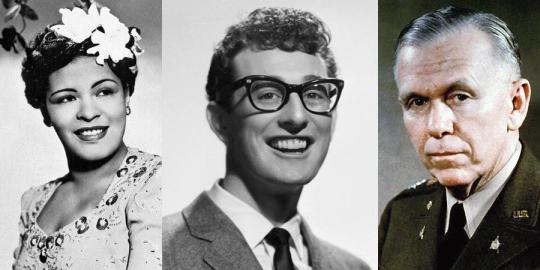
Famous 1959 deaths.
Cecil B. DeMille (American movie director & producer), 77
Dr. Frances McGill (Canadian forensic pathologist), 76
Carl Switzer (American child actor & singer), 31
Capt. MacGillivray Milne (American navy captain & governor of American Samoa), 76
Walter Beall (American baseball player), 59
Frank Shannon (Irish-American actor & writer), 84
Charles Holley aka Charles “Buddy” Holly (American singer & songwriter)(pictured), 22
J.P. Richardson; Jr. aka The Big Bopper (American guitarist & songwriter), 28
Ritchie Valenzuela aka Ritchie Valens (American guitarist & singer), 17
Vincent Astor (American businessman), 67
Nap Lajoie (American baseball player), 84
Helen Parrish (American actress), 35
Eric Blore (British actor & writer), 71
Lou Cristillo aka Lou Costello (American comedian & actor), 52
Fred Stone (American actor), 85
Edwin Balmer (American writer), 75
The Blessed Fr. Dominik Trčka (Czech Catholic priest), 72
Granville “Grant” Withers (American actor), 54
Rear Adm. Reginald R. Belknap (American admiral), 87
The Blessed Fr. Nicholas Charnetsky (Ukrainian Catholic priest), 75
Archbishop Marios Makrionitis (Greek Catholic archbishop), 45
Frank Wright (American architect), 91
James Gleason (American actor & playwright), 76
The Blessed María Guggiari Echeverría (Paraguayan professed religious), 34
Troy Sanders (American composer), 57
Vice Adm. William S. Pye (American admiral), 78
Cardinal Georges-François-Xavier-Marie Grente (French Catholic cardinal), 87
Ed Walsh (American baseball player), 78
George Reeves (American actor), 45
Grock (Swiss-Italian clown), 79
Friar Dr. Agostino Gemelli (Italian friar and doctor), 81
Billie Holiday (American singer)(pictured), 44
Fleet Adm. William D. Leahy (American admiral), 84
Charles “Heinie” Conklin (American actor & comedian), 73
Mother St. María Natividad Venegas De La Torre (Mexican Catholic nun & saint), 90
The Blessed Bishop Ioan Bălan (Romanian Catholic bishop), 79
Fr. Luigi Sturzo (Italian Catholic priest), 87
Fleet Adm. William Halsey; Jr. (American admiral), 76
Archbishop Alexander Evreinov (Russian Catholic archbishop), 82
Edmund Gwenn (British actor), 81
Wayne Morris (American actor), 45
Taylor Holmes (American actor), 81
De Benneville “Bert” Bell (American NFL commissioner), 64
Gen. George C. Marshall; Jr. (American general & secretary of defense)(pictured), 78
Cardinal Federico Tedeschini (Italian Catholic cardinal), 86
Victor McLaglen (British-American boxer and actor), 72
Archbishop Joseph Charbonneau (Canadian Catholic archbishop), 66
Archbishop Juozapas Skvireckas (Soviet-Austrian Catholic archbishop), 86
Charlie Hall (British-American actor), 60
Jim Bottomley (American baseball player), 59
Russell Simpson (American actor), 79
#Religion#Tributes#Celebrities#Music#Texas#Iowa#Pennsylvania#New York City#New York#Politics#Washington D.C.#Movies#Massachusetts#Canada#Manitoba#Illinois#West Virginia#Sports#Baseball#Maryland#Books#Ireland#Money#Rhode Island#Florida#Georgia#U.K.#New Jersey#Colorado#Czech Republic
1 note
·
View note
Text
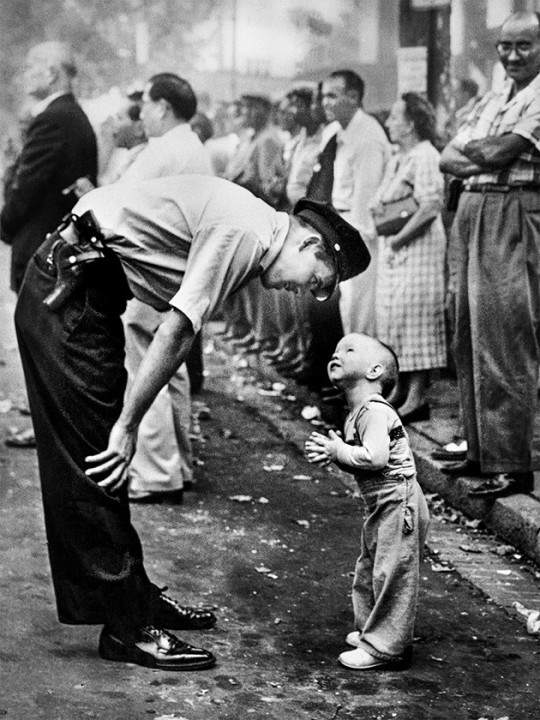
William C. Beall. “Faith and Confidence”. 1958
#william c. beall#vintage#photography#black and white#street photography#art#history#vintage photography#black and white photography#1950s
643 notes
·
View notes
Photo

gentle man, it’s dangerous for you to cross the street during the parade
#pulitzer prize#photography#william c. beall#1958 pulitzer prize#baby#police man#i fell in love with this photo at first sight#look at those cute hands#grown ups warm eyes towards the baby boy
39 notes
·
View notes
Photo

Faith and Confidence. Washington D.C. (1958) Pulitzer prize winning photo.
@William C. Beall
44 notes
·
View notes
Photo

“Faith and Confidence” 1958
Photo by William C. Beall
47 notes
·
View notes
Text
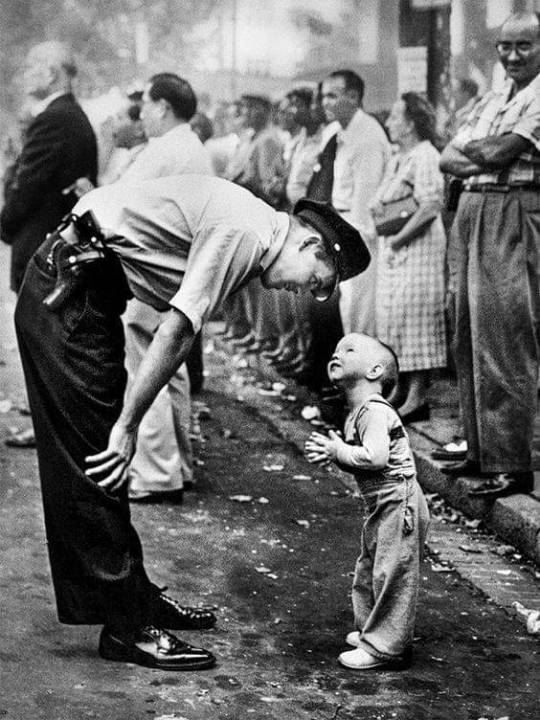
The 1958 Pulitzer Prize Winner in Photography - William C. Beall of Washington (DC) Daily News For his photograph - " Faith and Confidence, " showing a policeman patiently reasoning with two-year-old boy trying to cross a street during a parade. September 10, 1957
37 notes
·
View notes
Text
Book Thirty-Nine: The Green Mile
Hoooooly crap, y’all! This is the halfway point of this project: I’ve read thirty-nine books, and I have approximately thirty-nine more to go (depending what Steve releases before the end of the year). And honestly? If it wasn’t for COVID, and quarantine, and lots of time traveling (pre-COVID, of course); I wouldn’t have reached the halfway point. This probably would have turned into a two year project. But here we are, diving into The Green Mile!
Of all the Steve books, I dreaded re-reading The Green Mile the most. I had originally read it when it was first published, and it came out in chapters every few weeks. I’d breathlessly tear through a chapter, only to have to wait for the next one to be released. It was a pretty fun format, and I really wish I still had my original chapters. Oh well.
But this time around, I didn’t think I was in the right head-space to read it, and the world sure as hell isn’t in the right head-space. The Green Mile was published in 1996, and takes place in 1932. It could very well have been set in our current climate. Just a few quotes for you...
“He got (his sentence) commuted mostly because he was white...”
“I think we have to be humane and generous to solve the race problem. But we have to remember that your negro will bite if he gets the chance, just like a mongrel dog will bite if he gets the chance and it crosses his mind to do so.”
“John Coffey is a Negro, and in Trapingus County we’re awful particular about giving new trials to Negros...”
NOTHING HAS FUCKING CHANGED SINCE 1932!! We are still hearing these same sentiments from people claiming, “I’m not a racist, but...” Our judicial system is still biased against POC, and the rate of incarceration for POC compared to whites is staggering.
NOTHING HAS FUCKING CHANGED. And that’s the part that makes me the most sad. So, yeah, I wasn’t looking forward to cracking The Green Mile in our current climate.
Few Steve books have touched me the way this one did. A fellow Constant Reader pointed out, “This is one of the only stories where he showcases the forces of good. We usually get ghosts and demons, but John Coffey may be the closest thing he has ever wrote of an angel...” Hot damn, Sam Beall, you’re not wrong.
But in addition to forces of good, we’ve also got Percy Wetmore; who I feel is the nastiest Steve villain ever... he makes Randall Flagg and The Crimson King look like dudes who drink matcha lattes at a cat cafe, and compare notes on their polarized sunglasses. Percy Wetmore immediately activates my, “must kick hard in the junk” reflex. He. Is. The. Worst.
The Green Mile is told from the POV of Paul Edgecombe; a prison guard on “the green mile;” which is where convicted killers awaiting the death penalty are housed. “The green mile” refers to the long hallway inmates have to walk down to get to the electric chair.
The story kicks off when John Coffey (like the drink but spelled different) is accused and found guilty of brutally raping and murdering two little blonde twin girls. He’s found on a riverbank, clutching their bodies, and crying, “I couldn’t help it, I tried to take it back, but it was too late...”
So, Coffey makes his way onto The Mile, and shares space with Eduard Delacroix and his pet mouse Mr. Jingles; and William Wharton (Billy the Kid, or Wild Billy, depending on the day). Delacroix is French southern gentleman found guilty of murder, and then arson to hide the murder scene. He’s a bad guy... don’t get me wrong... but there’s something intensely likable about him. Maybe it’s the pet mouse he’s trained, maybe it’s his meek nature that Percy (another prison guard) takes advantage of... I don’t know. But you grow to like him, and the relationship he has with Mr. Jingles. Mr. Jingles randomly showed up one day, and the guards (except Percy) were all taken with him. After Percy attempts to smash him with a club, he takes to Delacroix and whispers in his ear that his name is Mr. Jingles.
William Wharton is another story. He’s a wild card, who upon his arrival, promptly tries to strangle a prison guard. He also spits masticated Moon Pie at another guard. Sooo, he’s a lot of fun.
The three of them live on the wing, and the first up for execution is Delacroix. Percy has a particular hatred of him, he claims he tried to grab his junk once. It didn’t happen... Del just got yanked along when he was in handcuffs and fell in Percy’s lap. The day before his execution, Percy thinks it might be fun to kill Mr. Jingles. Like I said... total fucking asshole. He stomps on him, and Del loses it. Mr. Jingles is the only thing he loves in the whole world... and maybe the only thing that loves him back.
Thinking quickly, Coffey asks for Mr. Jingles little mousy body. Speaking of junk grabbing, he grabbed Paul and cured the UTI he had brewing for weeks. So, Paul is hopeful Coffey can use his miraculous healing abilities to do it again. And he does! Mr. Jingles lives!
But Percy’s not done being a scab on the balls of society. The night of Del’s execution, he tells him Mr. Jingles isn’t going to Mouseville like Paul promised he was (total lie- like telling kids a dog is going to live on a farm). And then, Percy doesn’t wet the sponge before placing it on Del’s head prior to his execution, so it’s horrible, painful and just horrible. So, Del is dead, Percy plays the, “I don’t know what happened!” card, and Mr. Jingles is gone. My heart. Of all the scenes in the book, I was dreading this one the most.
Meanwhile, the prison warden, Hal Moores is struggling with the fact his wife Melinda has a massive brain tumor, and it’s starting to change her personality. He doesn’t know what to do. Paul thinks they should pack Coffey up, and take him out to the Moores’s house and have him heal Melinda.
It’s a crazy idea, but it ends up working. The other prison guards drug Billy; and put Percy in a straitjacket and throw him in the supply closet so he doesn’t notice anything is amiss. They tell him it’s payback for how Del’s death went down. So, they race out to see Hal and Melinda, and Coffey does his thing. They race back to the prison, and no one notices they’ve been gone. However, Coffey is in a bad way. This was much more healing than he’s used to doing, and he’s mentally and physically exhausted.
After they release Percy from the supply closet, Coffey grabs him and “kisses” him: which transfers the sick energy he got from Melinda into Percy. Percy then turns around, and shoots Wild Billy/Billy the Kid dead; and then becomes catatonic.
He’s then carted off to the psych ward, which is too good for him. Fiery pits of hell would have been better.
But wait!
Plot twist! Billy the Kid had briefly touched Coffey, and Coffey learned HE was the one who had killed the two little girls. Paul puts this together as well, and tries to fight for Coffey’s release. He realizes Coffey’s words, “I couldn’t help it, I tried to take it back, but it was too late...” were about his inability to heal the girls, not his guilt.
When I had read the revelation the first time, I flew through the end, hoping and praying justice would be served, and Coffey wouldn’t be executed. Bad things didn’t happen to good people like John Coffey, right? Oh, how naive. There were A LOT of tears.
But Coffey is at peace with his upcoming execution. He tells Paul, “I’m rightly tired of the pain I hear and feel, boss. I’m tired of bein on the road, lonely as a robin in the rain. Not ever havin no buddy to go on with or tell me where we’s comin from or goin to or why. I’m tired of people bein ugly to each other. It feels like pieces of glass in my head. I’m tired of all the times I’ve wanted to help and couldn’t. I’m tired of bein in the dark. Mostly it’s the pain. There’s too much...”
That right there makes me cry every damn time I read it.
So, Coffey is executed, and life continues on; as it always seems to do. Paul is actually writing this story in his old age, at the Georgia Pines nursing home. There’s an orderly there who’s just as evil as Percy, and he keeps trying to follow Paul on his daily walks outside. Where’s Paul going???
TO SEE MR. JINGLES!!!
Yes! He’s still alive! It seems when Coffey healed people, it added onto their life expectancy. Mr. Jingles was still alive, and Paul was one hundred and four years old. But he knew his time was coming. He reflects on the loss of his beautiful wife, the people he knew on the Green Mile, the guards he worked with, and that mile seems LONG.
Such a sad, beautiful end to an incredible work. This is another one I recommend to people who tell me they don’t like Stephen King. Try it... you’ll like it... when your heart is done breaking that is...
Total Wisconsin Mentions: 27
Total Dark Tower References: 38
Book Grade: A+
Rebecca’s Definitive Ranking of Stephen King Books
The Talisman: A+
Needful Things: A+
The Green Mile: A+
Rose Madder: A+
Misery: A+
Different Seasons: A+
It: A+
Four Past Midnight: A+
The Shining: A-
The Stand: A-
The Wastelands: A-
The Drawing of the Three: A-
Dolores Claiborne: A-
Nightmares in the Sky: B+
The Dark Half: B+
Skeleton Crew: B+
The Dead Zone: B+
Nightmares & Dreamscapes: B+
‘Salem’s Lot: B+
Carrie: B+
Creepshow: B+
Cycle of the Werewolf: B-
Danse Macabre: B-
The Running Man: C+
Thinner: C+
Dark Visions: C+
The Eyes of the Dragon: C+
The Long Walk: C+
The Gunslinger: C+
Pet Sematary: C+
Firestarter: C+
Rage: C
Insomnia: C-
Cujo: C-
Nightshift: C-
Gerald’s Game: D
Roadwork: D
Christine: D
The Tommyknockers: D-
Next is Desperation, which I know nothing about, other than it’s a real chonk of a book.
Do me a favor, please? Stop being ugly to each other. Stop hurting gentle people like John Coffey. Please and thank you.
Until next time, Long Days & Pleasant Nights,
Rebecca
11 notes
·
View notes
Text

Durante un festival chino, el oficial de policía Maurice Cullinane intenta convencer al pequeño Allen Weaver para que no cruce la calle durante la explosión de los fuegos artificiales. El fotógrafo era William C. Beall que trabajaba entonces para el Washington Daily News. Llamó a esa foto "Fe y confianza." Fue Premio Pulitzer de 1958.
"Dios se opone a los orgullosos, pero trata con bondad a los humildes".
- Santiago 4:6, DHH.
https://estebanlopezgonzalez.com/2014/08/28/angelo-giuseppe-roncalli/
3 notes
·
View notes
Photo









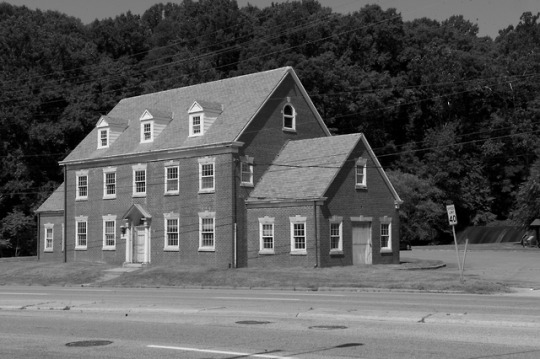
Ghost Expedition Montgomery County, Silver Spring Maryland: Burnt Mills West Special Park/Robert B Morse Water Filtration Plant
The Burnt Mills area in Silver Spring, Maryland takes it name from a mill that was said to have burned down there sometime before 1788, possibly circa the 1740′s timeframe
From an antique copper stencil, veteran local journalist J. Harry Shannon (aka "The Rambler") speculated in 1916 the burnt mill may have been known as "Glen Cairn Mills Family Flour"
Milling operations in Burnt Mills date to 1745 when then area was surveyed and patented as the "Mill Seat." The area's terrain and rapid waterfalls enabled the operations of a series of grist, saw and flour mills. The first mill in Mill Seat was constructed later that year on property owned by Samuel Beall Jr. And this was likely the namesake mill that burned down
The earliest records of a grist mill at Burnt Mills date to 1803 when the property known as "Beall’s Industry" was sold by Walter Beall to Peter Kemp and James W. Perry
Nathan Lufborough acquired the mill property, described in an 1823 deed as "one hundred acres more or less". He had intended to sell the mill in 1847 but he died before the sale could be completed, leaving the property to his heirs. The property was listed in 1850 as a “flour and bone” mill
The mill at Burnt Mills was owned by James L. Bond from 1858 to 1886. The mill produced three grades of flour and stone-ground corn mill. The technology of the mill improved over time. A roller mill replaced mill stones around 1895. A turbine had replaced the wheel by 1880
Bond sold the property to his sons-in law in 1886. The last owner was Dr. George W. Bready who acquired the flour mill and land in 1906
In 1913, The Rambler rendered the following portrait of the old flour mill in the Sunday Star
The shingle roof of the mill is green, dark and old, with moss, but nearly everything else about the mill - the miller, of course, included - is whitened by the flour and meal ground there, and which has been grinding there so long that no man's memory runneth to the contrary
Near the mill is the miller's house, bowered in the shade of numerous close-growing trees and the home of Dr. William T. Brown, surrounded by shrubbery, orchard and vineyard
By 1922, the mill had ceased operations. That year, the mill was sold to the Washington Suburban Sanitary Commission (WSSC). The old mill sat idle for years until it was demolished in 1928
In 1879, Burnt Mills (Four Corners) was a farm community with a population of 125 persons. In 1934, the Robert E. Lattimer Land Company developed the area as a community of country estates known as Burnt Mills Hills. The development preserved the area’s topography of rolling hills and streams and farm lanes
WSSC began construction of a water filtration facility in 1930. The plant featured a "state of art" design, by WSSC Chief Engineer Robert B. Morse, for rapid sand removal and water treatment
The plant had two filter assemblies, two pumping stations and a new concrete dam. Pumping stations were designed in the Georgian Revival style to give the appearance of large colonial houses rather than a public utility
The low-lift pumping station moved cleaned (sediment free-water) to filter assemblies where lime and ammonia were added
The filter assemblies featured circular rings that were used for each stage of the filtration process, which included coagulation, filtration, and delivery
Chlorine was added as the high-lift pumping station moved treated water to WSSC distribution lines
The late Robert Brooks Morse (1880-1936) was married to Carrie Emma Ross-Morse (1883-1979). They had two children: Caroline Allen Morse (1903-1905) and Katherine B. Morse-Devereaux (1904-1984)
He was trained as a civil engineer at Johns Hopkins University (A.B. 1901) and at Massachusetts Institute of Technology (S.B. 1904). He became Chief engineer at WSSC since its inception in 1918
Unfortunately, he died prematurely at age 55 due to blood poisoning, months before the water filtration plant opened. WSSC named the water filtration plant in his honor
The water filtration plant did not have the capacity to meet rising service demands from suburban growth and it was closed in 1962. The Maryland-National Capital Park and Planning Commission acquired the former water plant in 2000. Today they are recreational facilities known as Burnt Mills West Special Park (the high-lift pumping station) and Burnt Mills East Special Park (the low-lift pumping station)
There are no haunting legends associated with historical Burnt Mills nor the Robert B. Morse Water Filtration Facility. However, there may be potential for transcommunication experiences owing to area history. The ghost expedition will focus on "drop-in" communications, and not on evidence for a haunting
The ghost expedition will also participate in National Ghost Hunting Day (NGHD), an event sponsored by Haunted Journeys magazine. Connectivity and live streaming will be provided by SHINDIG. Digital marketing services for the event are being provided by CyberSpyder. The event will attempt to build a global “consciousness bridge” that will last two hours
Data from random event generators (REGs) belonging to the Global Consciousness Project (GCP) that are in proximity to participant locations will be monitored over the event
Results from NGHD 2016 noted a marked shift in random walk trending generated by GCP REGs at the outset of last year’s event
Similar patterns were also encountered at NGHD start in MPR’s REG experiment in 2017 in Dundalk
The film project will not be open to the public but will be livestreamed over the SHINDIG platform. Look for “Site, MD, USA, Burnt Mills West Special Park”
REFERENCES:
Beall, J.R. (1931). The history and construction of the mill at Burnt Mills, Maryland. Initiation Thesis. Records of Phi Mu Fraternity, Special Collections, University of Maryland Libraries. University of Maryland, College Park. Hosted at archive.org
Boyd, T.H.S. (1879). The history of Montgomery County, Maryland - From its earliest settlement in 1650 to 1879. Baltimore, W.K. Boyle and Son
Bushong, W. (1994, May). Robert B. Morse Water Filtration Plant. M33-22. Maryland-National Capital Park And Planning Commission. Maryland Historical Trust
Cook, E.M.V. (1992, Nov). The Story of Burnt Mills. In The Montgomery County Story, Quarterly Journal of the Montgomery County Historical Society, Vol. 35. No. 4., Rockville, MD. pp 225-235.
Find A Grave, database and images. Memorial page for Robert Brooks Morse (13 Sep 1880–31 Jan 1936), Find A Grave Memorial no. 135832899, citing Chebeague Island Cemetery, Chebeague Island, Cumberland County, Maine, USA. Maintained by townsendburial (contributor 47629974)
Historic Preservation, Montgomery County, Maryland. (1996, Mar 6). Montgomery County Atlas (MCATLAS) Map Viewer: ROBERT B. MORSE COMPLEX (WSSC). Resource Number: 33/022-000A. Maryland-National Capital Park And Planning Commission. Montgomery County, Maryland
Kelly, C.L. (2012). Burnt Mills Hills. M33-29. Maryland-National Capital Park And Planning Commission. Maryland Historical Trust
MONTGOMERY COUNTY, MARYLAND HISTORICAL CHRONOLOGY. (2018). Maryland State Archives
Montgomery Parks. (2016, Aug 15). Burnt Mills West Special Park. Maryland-National Capital Park And Planning Commission
Montgomery County Planning Department. Montgomery County Atlas (MCATLAS) Map Viewer: Burnt Mills West Special Park. Montgomery County (MD). Department of Parks. Montgomery County, Maryland
National Ghost Hunting Day: The World’s Largest Ghost Hunt. (2018). Haunted Journeys
Shannon, J.H. (1913, Jun 22). With the Rambler. Sunday Star, Washington DC. Reprinted in Neighbors of the Northwest Branch
Shannon, J.H. (1916, May 14). With the Rambler: Tramping the Northwest Branch. Sunday Star, Washington DC. Reprinted in Neighbors of the Northwest Branch
Sutton, R. (2016, Jun 16). Burnt Mills Dam has a long history in Montgomery County. Ross Sutton Blog. Keller Williams Real Estate
Williams, B.J. (2017). Exploring Collective Consciousness: Could There Be Some Implications for Paranity?. National Ghost Hunting Day Collective Consciousness Article. Psychical Research Foundation
IMAGES:
Historic American Engineering Record. (1968). REAR ELEVATION of high-lift pumping station. Robert B. Morse Water Filtration Plant, 10700 and 10701 Columbia Pike, Silver Spring, Montgomery County, MD. Library of Congress
Historic American Engineering Record. (1968). FRONT ELEVATION of high-lift pumping station. Colesville Road (also called U.S.Route 29 or Columbia Pike) is in foreground. Robert B. Morse Water Filtration Plant, 10700 and 10701 Columbia Pike, Silver Spring, Montgomery County, MD. Library of Congress
Burnt Mills Flour Mill prior to its demolition - Figure 1. (c 1928). From Beall, J.R. (1931). The history and construction of the mill at Burnt Mills, Maryland. Initiation Thesis. Records of Phi Mu Fraternity, Special Collections, University of Maryland Libraries. University of Maryland, College Park. Hosted at archive.org
Burnt Mills Flour Mill prior to its demolition - Figure 2. (c 1928). From Beall, J.R. (1931). The history and construction of the mill at Burnt Mills, Maryland. Initiation Thesis. Records of Phi Mu Fraternity, Special Collections, University of Maryland Libraries. University of Maryland, College Park. Hosted at archive.org
Historic American Engineering Record. (1968). GROUND FLOOR of high-lift pumping station. Note the main stairway and columns. Robert B. Morse Water Filtration Plant, 10700 and 10701 Columbia Pike, Silver Spring, Montgomery County, MD. Library of Congress
Historic American Engineering Record. (1968). ATTIC of high-lift pumping station showing steel framing and concrete slab roof units. Robert B. Morse Water Filtration Plant, 10700 and 10701 Columbia Pike, Silver Spring, Montgomery County, MD. Library of Congress
Historic American Engineering Record. (1968). OFFICE SPACE ON SECOND FLOOR of high-lift pumping station. Robert B. Morse Water Filtration Plant, 10700 and 10701 Columbia Pike, Silver Spring, Montgomery County, MD. Library of Congress
Historic American Engineering Record. (1968). BASEMENT of high-lift pumping station. Note steel I-beam and pump foundations. Robert B. Morse Water Filtration Plant, 10700 and 10701 Columbia Pike, Silver Spring, Montgomery County, MD. Library of Congress
National Ghost Hunting Day: The World’s Largest Ghost Hunt. (2017). Haunted Journeys
Montgomery Parks. (2016, Aug 15). SOUTHEAST ELEVATION. Burnt Mills West Special Park. Maryland-National Capital Park And Planning Commission
#ghost#ghosts#haunted#haunting#paranormal#psi#parapsychology#post mortem survival#survival of consciousness#survival#itc#drv#instrumental transcommunication#drop in communicators#burnt mills#montgomery county#silver spring#burnt mills west special park#robert b morse water filtration plant#hauntedmaryland#moco
37 notes
·
View notes
Text
Fwd: Other: GCWilliamsPrize.EvolutionaryMedicineAwarded.LucaErmini
Begin forwarded message: > From: [email protected] > Subject: Other: GCWilliamsPrize.EvolutionaryMedicineAwarded.LucaErmini > Date: 30 March 2022 at 05:18:26 BST > To: [email protected] > > > > The $1000 George C Willams prize is awarded each year by the International > Society for Evolution, Medicine and Public Health (http://ISEMPH.org) to > the most significant article published the previous year in Evolution, > Medicine, and Public Health, an open-access journal with an impact > factor of 5.4 published by the Oxford University Press. The new > Editor, Cynthia Beall, can make publication possible for all accepted > articles, irrespective of the author's financial resources. See the EMPH > website for details, or contact the editor about possible submissions. > https://ift.tt/mBuQscj > > The 2022 Prize is awarded to: > "Evolutionary selection of alleles in the melanophilin gene that impacts > on prostate organ function and cancer risk", by Ermini, Luca, Jeffrey > C Francis, Gabriel S Rosa, Alexandra J Rose, Jian Ning, Mel Greaves, > and Amanda Swain, all from The Institute of Cancer Research in London. T > > The first author, Luca Ermini, will give a plenary presentation based on > the article at ISEMPH 2022 in Lisbon, July 5-8, 2022. Abstracts for > ISEMPH2022 are welcome until April 15. https://isemph.org > > The Prize Committee also recognized three finalists: > > O’Brien, Siobhán, Michael Baumgartner, and Alex R Hall. 2021. “Species > Interactions Drive the Spread of Ampicillin Resistance in Human-Associated > Gut Microbiota.” Evolution, Medicine, and Public Health 9 (1): 256??"66. > > Thomas, Misty D, Akamu J Ewunkem, Sada Boyd, Danielle K Williams, Adiya > Moore, Kristen L Rhinehardt, Emma Van Beveren, et al. 2021. “Too Much of a > Good Thing: Adaption to Iron (II) Intoxication in Escherichia Coli.” > Evolution, Medicine, and Public Health 9 (1): 53??"67. > > Thompson González, Nicole, Zarin Machanda, Emily Otali, Martin N Muller, > Drew K Enigk, Richard Wrangham, and Melissa Emery Thompson. 2021. > “Age-Related Change in Adult Chimpanzee Social Network Integration.” > Evolution, Medicine, and Public Health 9 (1): 448??"59. > > Thanks to the Prize Committee, Constantinos Voskarides (chair), Eric > Shattuck, and Jessica Hoffman, and to all authors who published articles in > Evolution, Medicine, and Public Health. > > > [email protected] >
via IFTTT
0 notes
Text
HISTORY OF SAINT JAMES’: 1930 BICENTENNIAL
07/02/2015
BY SJECWARRENTON
HISTORY OF SAINT JAMES’: 1930 BICENTENNIAL

Saint James’ has a tradition of marking the anniversary of significant events in its history.
Today, we recall an earlier bicentennial – 200 years of Hamilton Parish, 1730-1930, celebrated 85 years ago with a gift to the church that continues in use and will symbolize the devotion of parishioners for generations to come. The following is recorded in Vestry Minutes:
Wednesday, May 21st, 1930, the Bishop of the Diocese, Rt. Rev. St. George Tucker, D.D. consecrated the Memorial Chalice presented to the Hamilton Parish on the two hundredth anniversary of the founding of the Parish.
This chalice was made of silver, gold and precious stones, given by the members of the congregation, in memory of the following persons:
Mrs. Martha Pickett Brooke | Mrs. Patsy Gordon PerkinsMrs. William Horner | Mrs. Ann Morson Scott Payne | Mrs. Alexander John Marshall | Rev. Upton Beall Bowden | Mrs. Sidney Mason | Gen. Baldwin Day Spilman | Mrs. Eliza Clarkson Marshall | Mrs. Sarah Bryson Sublett | Rev. James Keith | Robert. E. Marshall | Mrs. Sarah Agnes Keith | Mrs. Martha Tyson Marshall | Mrs. Harriet A. Hilleary | The Butler Family of Fauquier Institute | Mrs. May Gaines Bell | The William Sheppard Family | Fairfax Gaines | Mrs. Maria Dawson Pendleton | Grenville Gaines | Thos. C. Thornton | Mrs. Grenville Gaines
CATEGORIES GENERAL
TAGS BICENTENNIAL, HAMILTON PARISH, HISTORY
http://saintjameswarrenton.org/1930bicentennial/
0 notes
Text
#Nixon50 #OTD 10/16/1970 President Nixon meeting with Bishop James Walsh of the Maryknoll Fathers and Brothers missionary order. We believe the other gentlemen are his brother, Judge William C. Walsh, and his nephew, Maryland Congressman J. Glenn Beall. (Image: WHPO-4757-07)
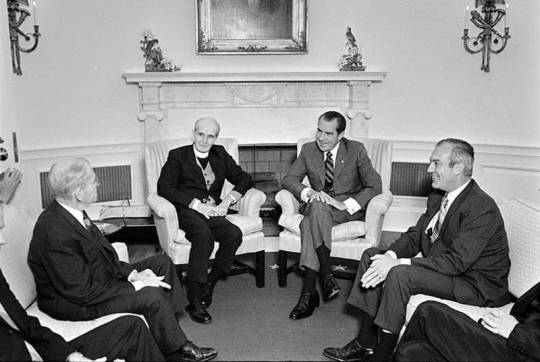
0 notes